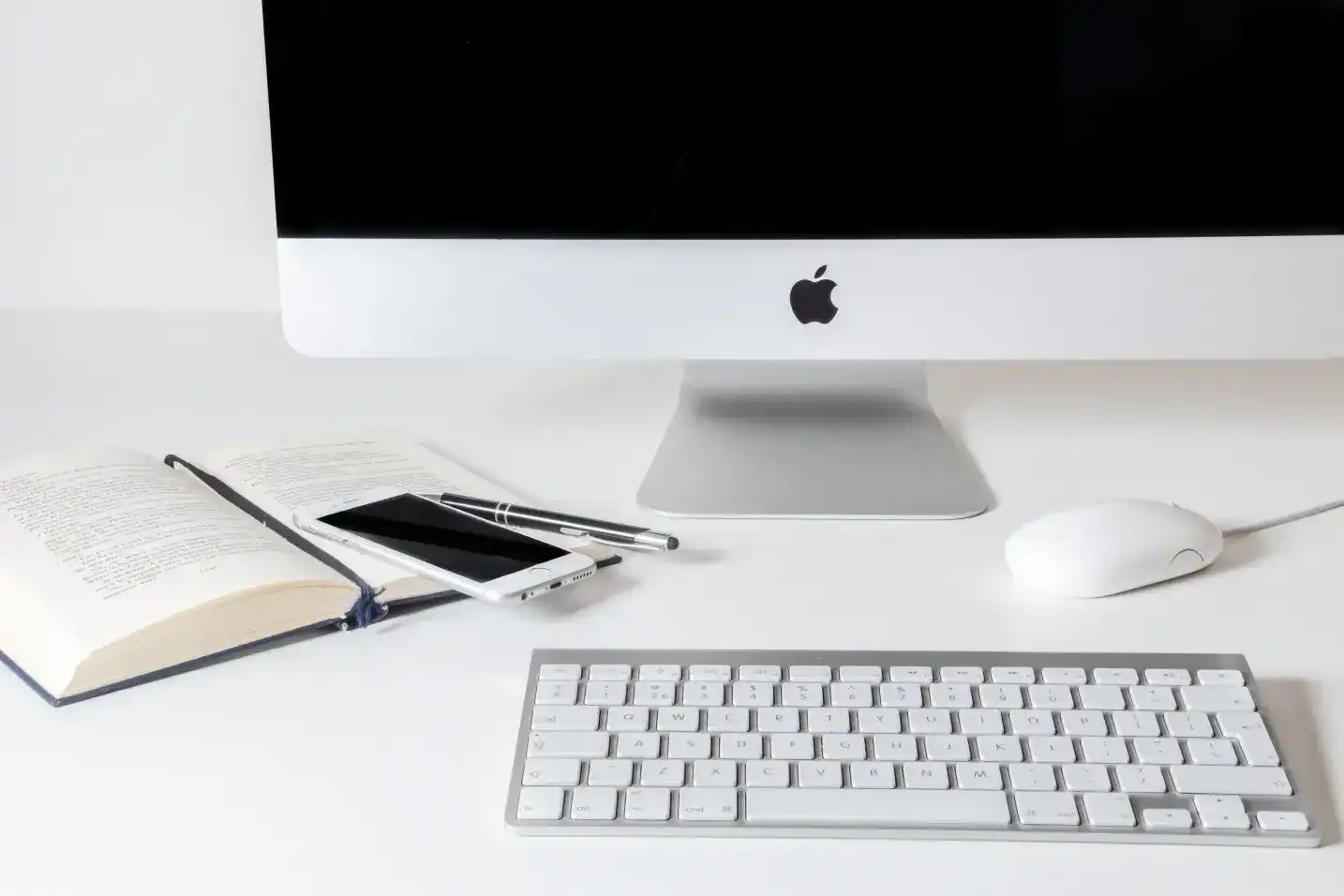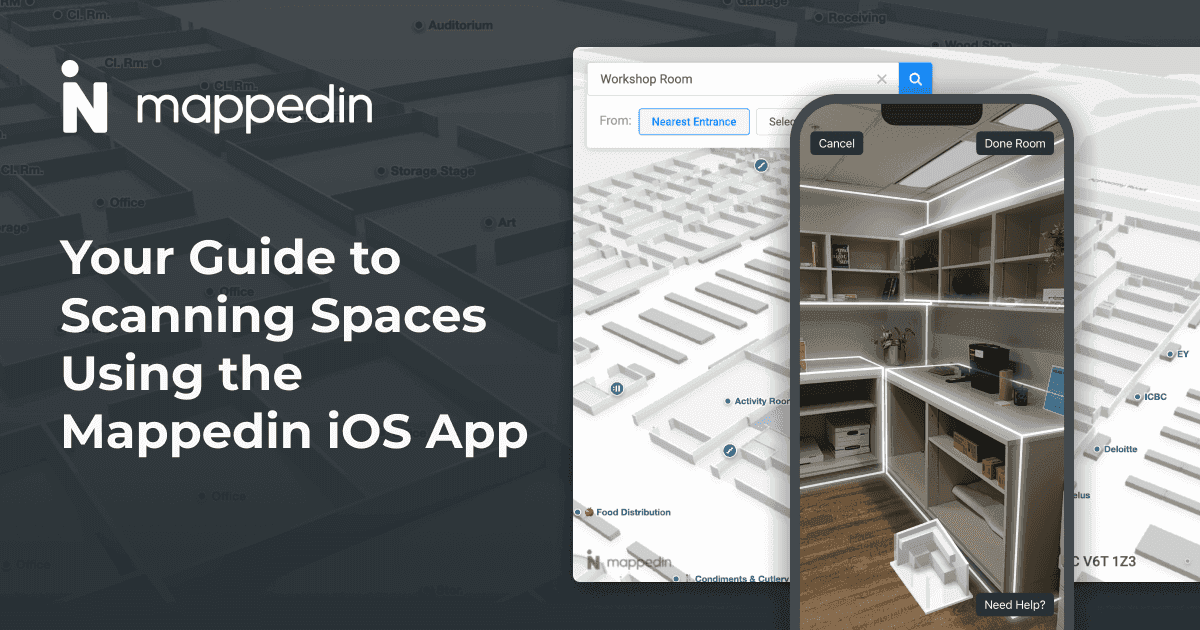Apple’s Object Capture can be used in a wide variety of industries, from indoor mapping, to retail, to entertainment. This blog will cover the basis of Apple Object Capture, and some of the potential use cases for this innovative technology.
Let’s dive in.
What is Apple object capture technology?
Apple Object Capture provides Apple device users with a relatively quick and easy way to create 3D representations of real-world objects — meaning you can turn physical objects into digital objects. Using your iPhone or iPad, you can take photos of an object, and use the new Object Capture API on macOS Monterey to turn them into 3D models that are optimized for augmented reality (AR).
Apple object capture algorithm
Apple Object Capture uses photogrammetry algorithms to turn a series of pictures taken on an iPhone or iPad into 3D models that can be viewed in AR.
Requirements for using Apple’s object capture technology
You can find all the information you need to get started with Apple Object Capture here. Apple also provides videos, documentation, sample code, and resources to help you create augmented reality experiences with Object Capture.

Limitations of using object capture technology
To get the best experience using Apple Object Capture, you must be in a well-lit space. Apple also recommends using a turntable to take pictures, or to slowly move around the physical object to maintain overlap between adjacent images. This is the key to producing an accurate 3D model of the photographed object.
Unfortunately, objects with transparent, textureless, or reflective components will not produce the best results with this technology. It is also recommended to use Apple devices with a LiDAR sensor built in to achieve an accurate scale of the object.
Create retail store maps faster
You can also turn real-world environments into digital assets with capture technology. Powered through Apple’s ARKit, the new RoomPlan API enables you to create a 3D floor plan of a room that includes dimensions and furniture.
Retailers can use an app built using Apple’s RoomPlan API to scan rooms and create an initial store map. They can then leverage a digital indoor mapping platform, such as Mappedin, to customize and edit the map, help shoppers and associates find products, test different store layouts, manage in-store promotions, and more.
AR advertising campaigns
This technology can also be used to create an interactive experience between the brand and the consumer; an AR advertising campaign. For instance, AR virtual fitting rooms or try-on tools can be implemented into apps to enable consumers to try out a product in a virtual environment before purchasing. Several cosmetic brands including MAC Cosmetics, Maybelline, and L'Oréal Paris have virtual try-on makeup tools on their websites.

Other examples include the IKEA Studio app, that allows you to place virtual furniture in a room, and AMC Theaters, that enable you to scan a movie poster to watch the trailer or purchase a ticket. The possibilities for AR advertising campaigns are practically endless.
Increase safety standards in healthcare
This may surprise you, but healthcare is an industry that could benefit from this technology. Hospitals, clinics, and pharmacies can implement AR tags on products or signage that, when scanned, provide people with important information on COVID-19 safety standards, treatment plans, or medication information. Augmented reality can also be helpful in medical training and practice.
Build smart offices more effectively
If you don’t have access to an existing floor plan of your office, you can create one with Apple’s RoomPlan API and begin building a smart office ecosystem. With a floor plan as your starting point, you can use Mappedin’s platform to layer on wayfinding to help employees and tenants find their way around, and integrate the map with other workplace services such as reservation management, push notifications, or workplace ticketing software.
Workplace optimization
An accurate 3D representation of the workplace is crucial in improving organizational efficiency as it makes day-to-day navigation and discovery simple. It enables employees and tenants to visualize the space, access various services, and optimize their time. Beyond indoor mapping and wayfinding, capture technology can also enable workplaces to train employees through AR.

Amusement and theme parks
What better place to create fun and entertaining experiences with capture technology than theme parks? AR can enhance attractions, tell stories, and keep guests entertained (especially when waiting in long lines). For example, Walt Disney World has created a number of AR experiences, including using AR filters to turn Disney into an augmented reality theme park, and using AR training to teach ride operators how to operate certain attractions.
Post secondary institutions
Used in post secondary institutions, AR can make learning more engaging, fun, and safer for students. One application would be using an AR app built with Apple ARKit to conduct chemical, physical or biological experiments. This would eliminate the potential hazards, save time that would be spent on setting up and cleaning up the experiments, and it adds an additional layer of fun for students.
Help design AR video games
Capture technology can also be used to create realistic and immersive experiences in the gaming world with AR. You might be familiar with using a virtual reality headset for VR video games, but what about AR?

A good example of this is Pokémon GO, an AR game where users would walk around the real world to capture as many Pokémon characters as they could. In contrast to virtual reality experiences, where your reality is replaced with a virtual environment and virtual objects, AR adds to reality by adding information on top of what is already there — creating a mixed reality.
Create indoor maps for museums and art galleries
In museums and art galleries, you can create indoor maps to guide visitors and provide them with detailed information on your exhibits. 3D visualizations enhance the experience by enabling users to discover the entirety of the venue, search for various exhibits, and make the most out of their visit. On the backend, venue owners can maintain up-to-date venue maps and advertise on-site gallery or museum events. Contact us today to get started.
Train stations
Train stations, along with other transportation hubs, can greatly benefit from AR technology to make staff training easier, engaging, and efficient. It enables employers to speed up the process by teaching employees how to act on-site with realistic scenarios in an AR app. Transportation hubs can also launch an AR app that enables passengers to find out additional details about their travel by pointing their phone towards a particular service.
What's next in the world of capture technology and AR experiences? Stay tuned for blog updates and subscribe to our monthly newsletter to learn more about trends in the industry.
Tagged In
Share


